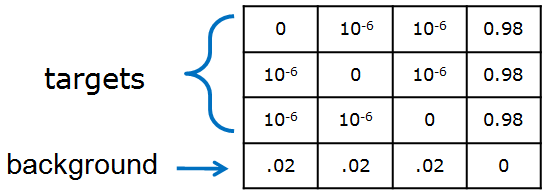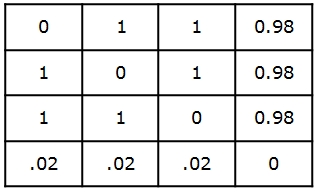![]()
| Multi-Resolution Cascade | ||||
| In this project, the problem of designing a multiclass detector cascade is considered. We argue that in a multi-class cascade, 1) early stages should implement binary target vs. non-target detectors of high simplicity and false-positive rate, 2) late stages should be multiclass classifiers of high accuracy and complexity to distinguish between tar- get classes, 3) middle stages can have intermediate numbers of classes, determined based on structure of the data. This bahavior is denotedmulti-resolution. We show that learning such detector is possible using cost-sensitive Boosting. By manipulating the costs of the associated Boosting risk, it is possible to emphasize 1) discrimination between the target classes and the negative class, or 2) discrimination among the target classes. Moreover, by tying this costs to the false positive rates of the cascade stages it is possible to guarantee the multi-resolution behav- ior. We use this strategy to design a boosting algorithm for learning multiclass detector cascades and show, through experiments in multi-view car detection and detection of multiple traffic signs, that the resulting classifiers are faster and more accurate than those previously available. | ||||
| Key Idea: | ||||
The key idea in this project is to combine MCBoost algorithm and ECBoost method to train cascade detectors that have multi-resolution behavior, i.e. early stages are binary target vs. non-target detectors that eliminate false positives, late stages multiclass classifiers that finely discriminate target classes. To enforce this behavior, the main idea is to use an appropriate cost matrix. For this we proposed that following cost matrix formulations. |
||||
 |
||||
| where fp^S is the target false-positive rate of the whole cascade, fp^s is the current false-positive rate and beta is paramenter to gaurantee high detection rate. For example if fp^S = 10^-6, in early iterations of cascade learning fp^s=1 and the cost matrix will become | ||||
 |
||||
| In this case, there is no cost for confustion between target classes and the classifier will become a binary background vs targets detector. In the last iterations, the false positive rate will be close to the target rate, e.g. fp^s = 10^-6 and thus the cost matrix will be | ||||
 | ||||
| In this case there is a significant cost for confusing between different classes. Therefore the corresponding classifier will be a fine-grained multiclass classifier. | ||||
| Demo: | ||||
| Download | ||||
| Related Publications: | ||||
|
![]()
Copyright
@ 2009 www.svcl.ucsd.edu
